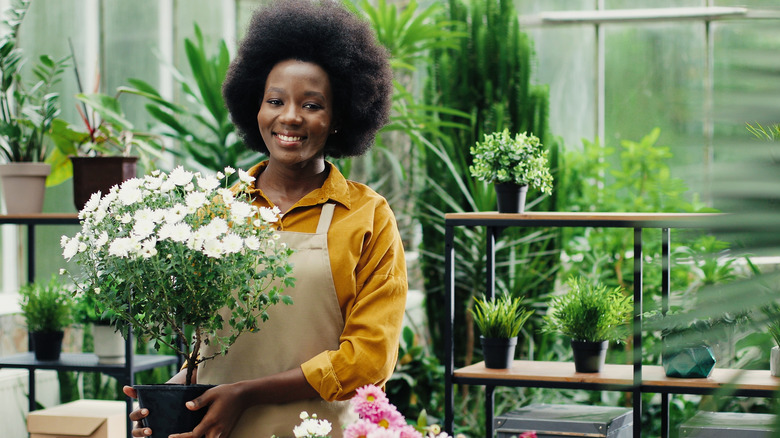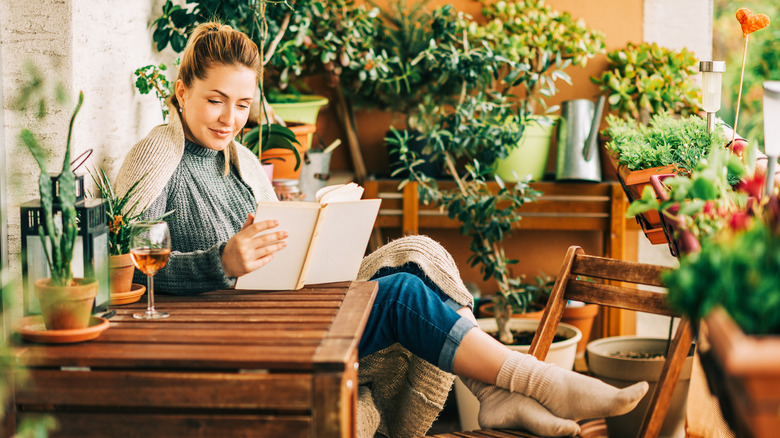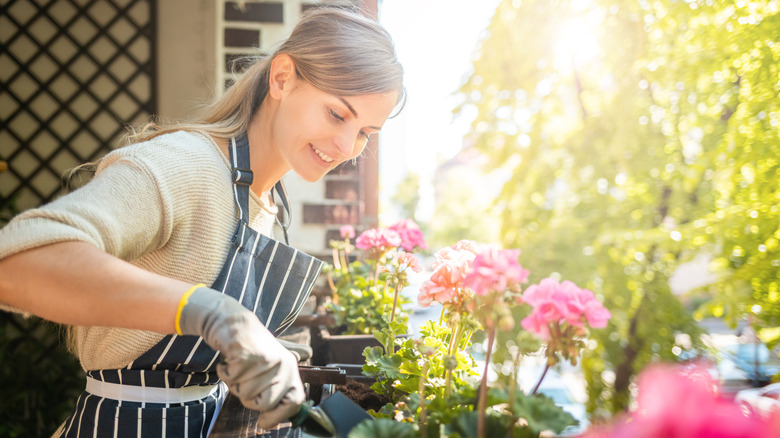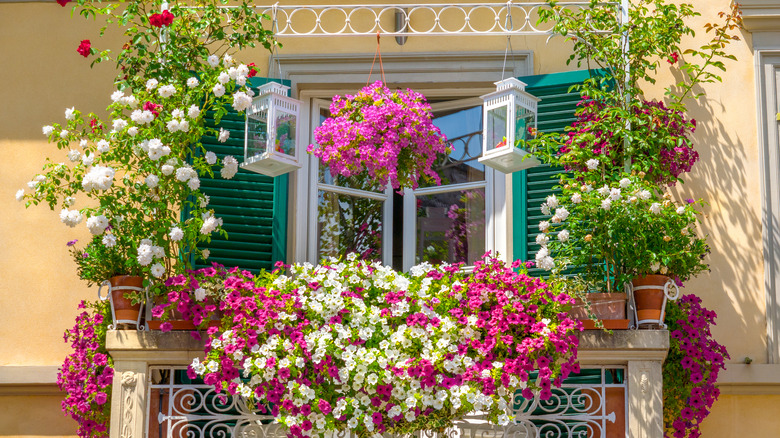How To Create A Flower Garden On Your Patio
Having plants and flowers around, whether you live in a high-rise apartment or a suburban condo, is non-negotiable for some people. It's one of the hallmarks of homesteading. Gardens can bring a bit of nature into an otherwise harsh urban environment; they can be eye-catching from the street, and they can provide untold hours of relaxation for a person who enjoys making living things grow.
But are they practical? Can you actually grow flowers on a balcony or patio when you can't be there to tend them daily or deal with in a sudden shift of weather? And if you're 15 stories up surrounded by buildings taller than yours, you can bet that light, wind, and the seasons are going to be an issue. Even if you're on the ground floor, what about neighbors and their pets and children? There's a lot to contemplate before you even get to what will thrive under such circumstances, as noted by Gardener's Supply Company.
Avid gardeners lacking adequate ground space to cultivate have been working these problems since the hanging gardens of Babylon passed into legend. And today, when technology allows people to live in extremes of both heat and cold that would have been inhospitable a little more than a hundred years ago, nature lovers want the creature comforts that make them feel most at home. Welcome to the world of microgardening.
How to start a patio flower garden
First, take inventory of your space. Do you own or rent? Because if you own your home, you can alter the surroundings to your specifications. If you rent, most leases require that tenants obtain written permission to alter your unit permanently.
Now that you're looking at your balcony or patio, map it out first with your mind, then on paper. If there's room for furniture, what works here? Clearly with a floral garden, the greatest pleasure you'll derive (other than meditative caretaking and tending) is enjoying their visual appeal and the pleasant scents they make. So factor in whether you want to sit outside sometimes, and whether you want company in doing so. With a small balcony, it can get crowded quickly. Also bear in mind that some of these plants won't do well on the receiving end of severe weather, so how many can you move inside during an emergency?
Remember too the old adage that "Rome wasn't built in a day" — especially if you're either a new gardener or one who's never tried to grow plants in a confined space. Less is more. It's better to start with a trellis, a pot or two, or a flowering plant you can suspend from the ceiling than to buy a florist shop's worth of materials, soil, and seeds, only to become overwhelmed before the first sprigs appear, per Balcony Garden Web. The more imaginative you are, the more creative and impressive your results.
What flowers thrive in a patio garden?
Apartment dwellers can often find a shared garden. But you want flowers for your patio or balcony to brighten the atmosphere at home, right? Start by selecting which flowers to grow, and figure out if you will need to move them indoors at times. You'll be surprised how much you can fit once your eye is fixed on vertical possibilities. In urban dwellings, the space that keeps residents from feeling claustrophobic is high ceilings (since the ground beneath is expensive and the air above is free).
Then research what thrives in an environment like yours (use a USDA Zone Map for guidance). The florists at Gardener's Path will tell you that more than a dozen varieties that will grow virtually anywhere in the U.S.; included among those the New England aster, the giant allium, clematis, the black-eyed Susan, the daylily, Siberian iris, and English lavender, to name but a few.
Remember, flowers do grow on chilly mountainsides, which mirrors high-rise life. Of these, dianthus flowers give off a spicy scent; delosperma have an extending blooming period of daisy-like flowers, and armeria blooms in pink splashes just before summer. Chrysanthemums, pansies, begonias, hydrangeas, and gardenias are also viable options depending on your location. Some will require more water or room. Some will live less long. But if you pay attention to what blooms when (which the seed packages will tell you), you can have a colorful and fragrant garden for much of the year.
Accessories for patio gardening
Most hobbies have their costs, and microgardening is no exception. You shouldn't scrimp when it comes to shears or heavy gloves to protect you from thorns and plants that irritate the skin. But without dedicated plot of ground, you'll have to be mindful of things that an ordinary gardener wouldn't — variables like size, space, and weight. Each flower pot you put on a patio or balcony is going to contain soil, water, and a flowering plant, as well as possibly compost or manure. Because ceramic and terra cotta pots add considerable weight, think about using plastic or fiberglass, or even rice pots or grow bags made of fabric. And there's no need to put your garden's weight entirely on the floor. Lattices and trellises make great use of space, and hanging baskets are comparatively lightweight as well.
Even watering plants is much more of a chore when your plants are on the patio and your water source is three rooms away. A watering can that will fit under a tub faucet can be one of the smartest investments you make. Also make some decisions about how much of the year you want to devote to gardening. There are many flowering plants you can bring inside before it freezes, and some of those (with the right amount of light) can brighten up an otherwise dreary winter. The best advice? Family Handyman says to keep it simple. Modest goals can always lead to greater ambitions in the future.



